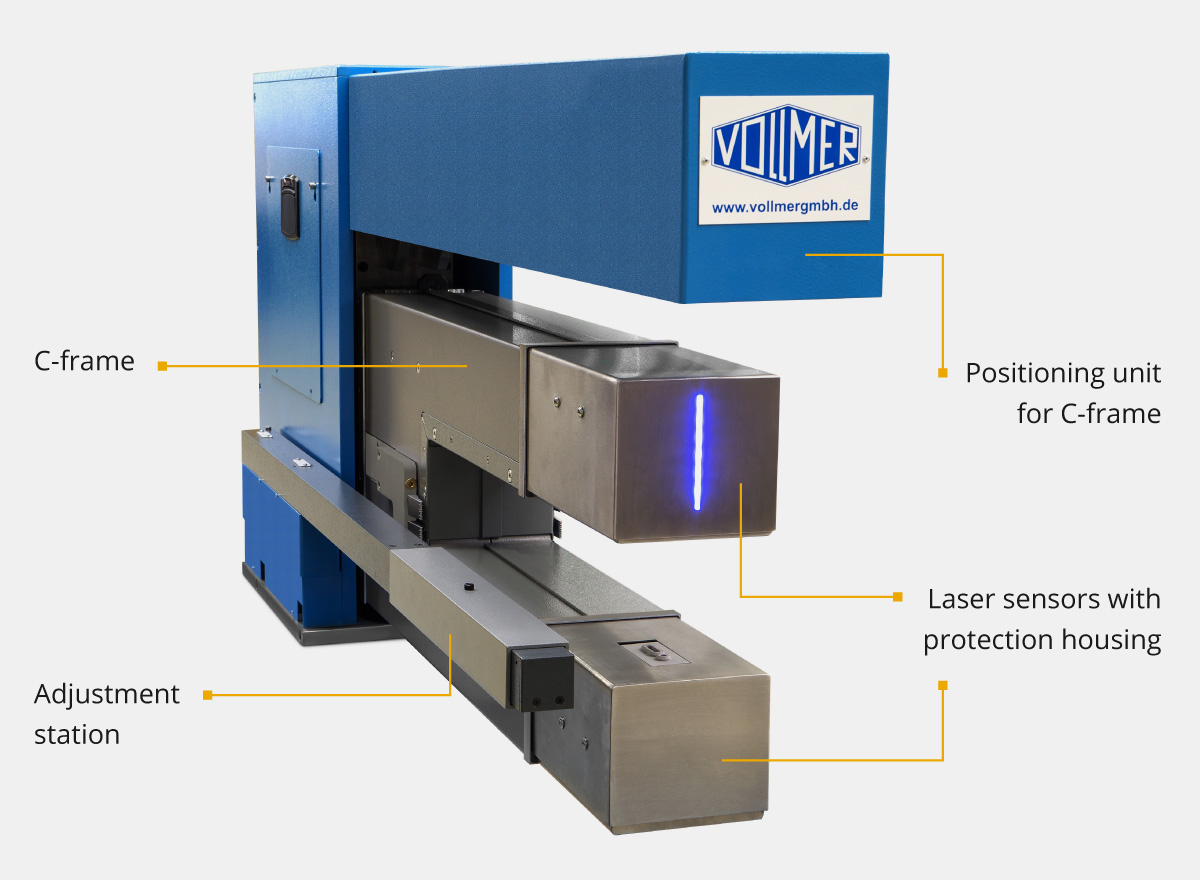The measuring of the the thickness of metal strips in cold-rolling mills requires an accuracy of ±1 µm.
Until now this has not been practice-oriented possible by laser measurement technology due to the rough conditions in a rolling mill. Today VOLAS sensors are used for this application, and they have proved.
The laser measurement technology with VOLAS sensors will increasingly gain market shares due to the contact-free and alloy-independent measurement.
 Laser Gauge VTLG
Laser Gauge VTLG 